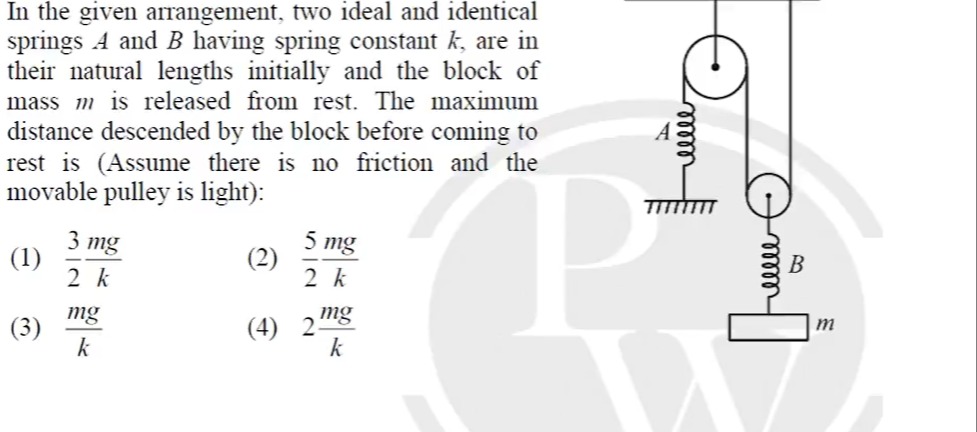Question
Question: In the given arrangement, two ideal and identical springs A and B having spring constant k, are in t...
In the given arrangement, two ideal and identical springs A and B having spring constant k, are in their natural lengths initially and the block of mass m is released from rest. The maximum distance descended by the block before coming to rest is (Assume there is no friction and the movable pulley is light):

23kmg
25kmg
kmg
2kmg
2kmg
Solution
The problem is solved using conservation of energy. Let y be the maximum downward displacement of the block and yp be the downward displacement of the movable pulley. The extensions of springs B and A are xB=y−yp and xA=yp, respectively. Thus, y=xA+xB. By analyzing the forces on the movable pulley, we find that at the maximum displacement (where velocity is zero), the net force on the pulley is zero, which implies kxA=0, so xA=0. This means spring A remains at its natural length at the maximum descent. Consequently, y=xB. Applying conservation of energy: Initial energy (zero) = Final potential energy (gravitational + elastic). 0=−mgy+21kxA2+21kxB2. Substituting xA=0 and y=xB, we get 0=−mgy+21ky2. Solving for y gives y=k2mg.
